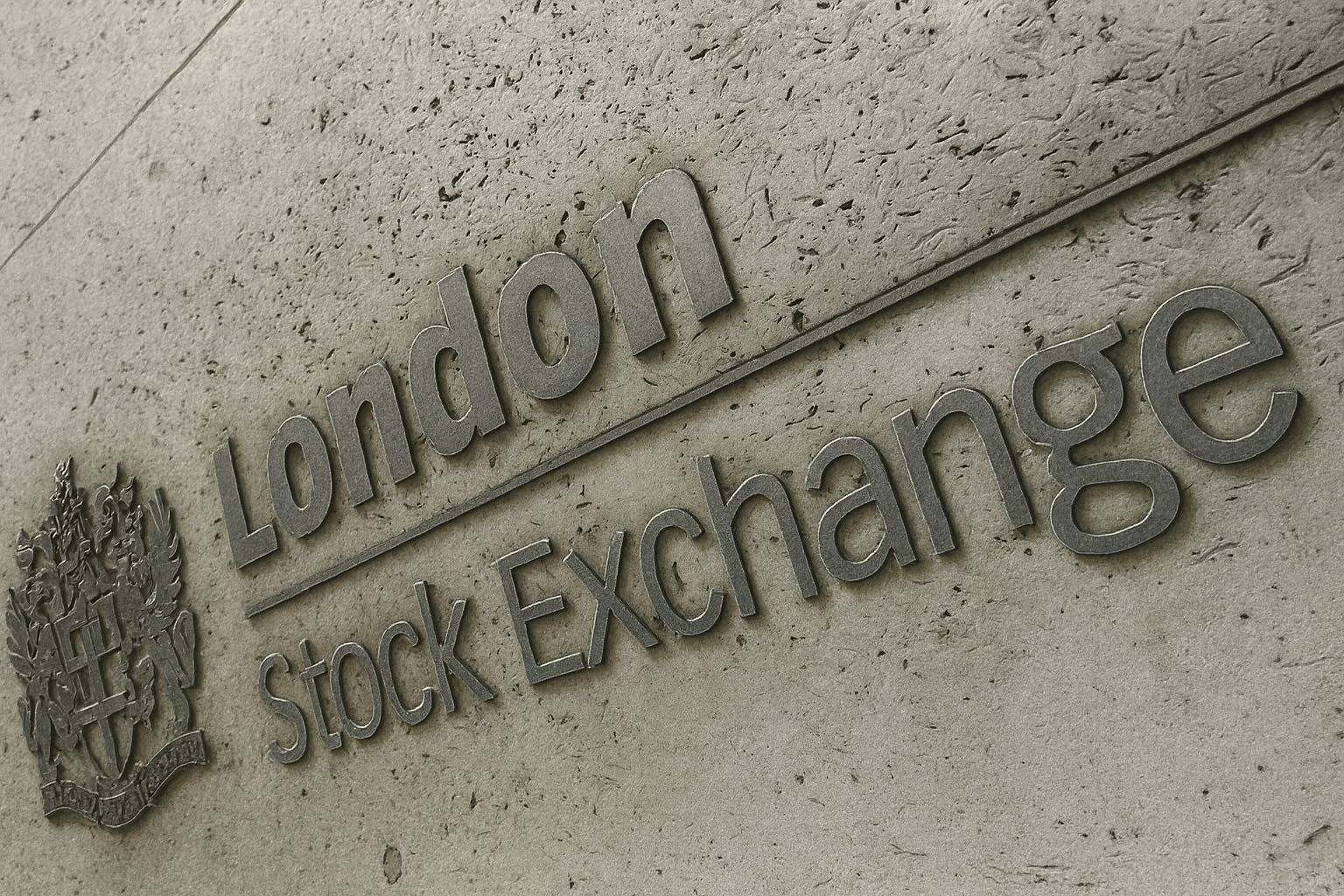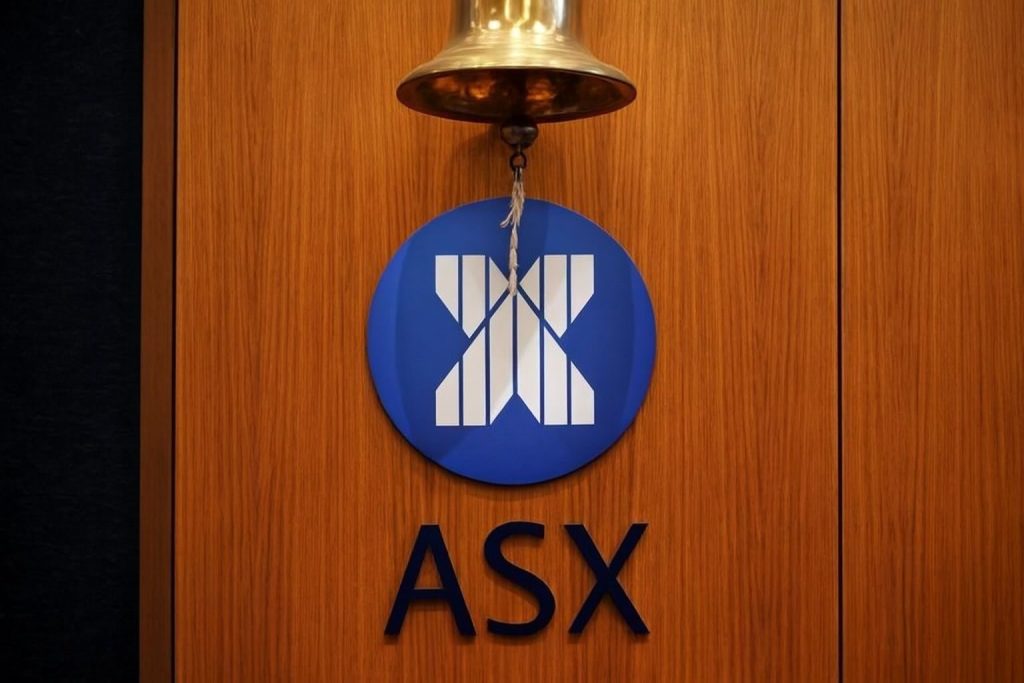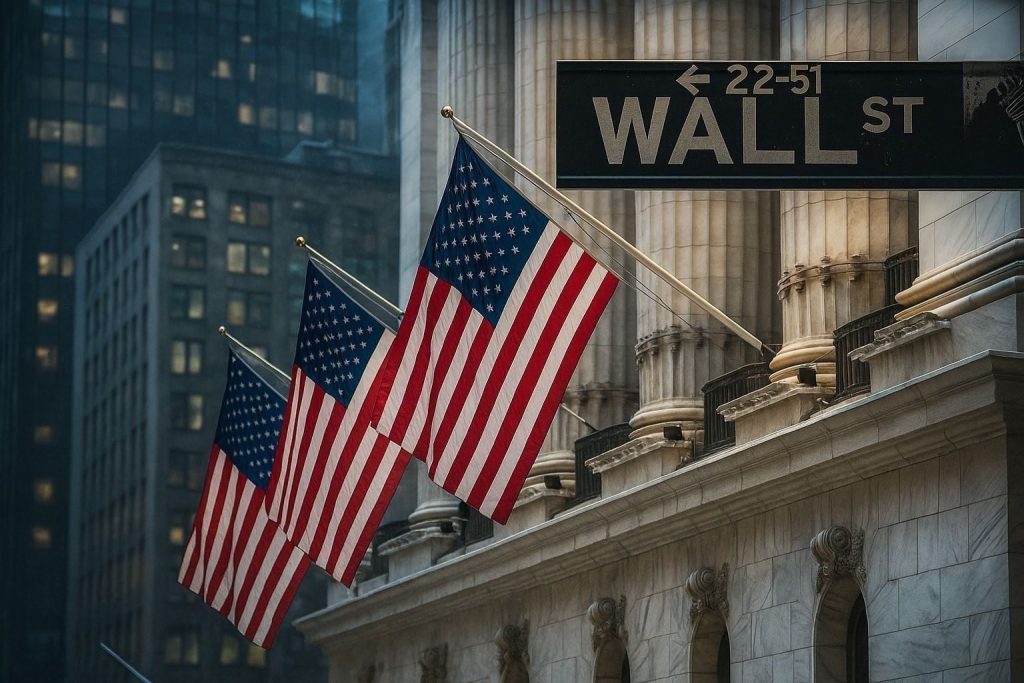UK equities pushed higher on Tuesday, 25 November 2025, as investors positioned for Chancellor Rachel Reeves’ first Autumn Budget and a fresh batch of US economic data later in the week.
The FTSE 100 closed up around 0.6% at 9,588.69, while the more domestically focused FTSE 250 outperformed with a 0.7% rise to 21,553.46. [1]
Gains were driven by banks, miners and retailers, offsetting sharp falls in insurers and travel stocks, in a session dominated by fiscal speculation and policy headlines.
Index snapshot: FTSE 100 and FTSE 250
Fresh closing data show a broadly constructive session for UK shares:
- FTSE 100 (blue-chip index)
- Close: 9,588.69
- Day change: +0.56%
- Intraday range: roughly 9,518 – 9,593 [2]
- FTSE 250 (mid-cap index)
- Close: 21,553.46
- Day change: +141.88 points (+0.66%)
- Intraday range: 21,368 – 21,559
- Turnover: about 195m shares traded [3]
Earlier in the session, Reuters reported that by around 10:50 GMT the FTSE 100 was up 0.2% and the FTSE 250 up 0.1%, with trading described as “choppy” as markets digested mixed global signals and waited for Wednesday’s Budget. [4]
Budget jitters in focus
The central story for UK assets is tomorrow’s Autumn Budget, Reeves’ first major fiscal set‑piece.
- Reuters notes that investors expect “significant tax measures”, with markets trying to work out where the axe will fall after indications that income tax hikes are now unlikely. [5]
- A weekly commentary from Walker Crips highlights that last week’s combination of weak PMIs, softer retail sales and subdued consumer confidence set a cautious tone, while talk of a roughly £30 billion fiscal consolidation has kept markets nervous about the scale and credibility of the upcoming package. [6]
- The same note points out that the FTSE 100 fell 1.5% and the FTSE 250 1.3% over the past week, even though the large‑cap index is still more than 20% higher year‑to‑date. [7]
The Guardian’s business live blog adds more colour, reporting:
- Speculation about a stamp duty holiday for investors buying shares in newly listed companies on the London Stock Exchange, potentially for the first three years after an IPO – a move aimed at reviving the UK listing market. [8]
- Plans to extend the sugar tax (Soft Drinks Industry Levy) to more sugary soft drinks and milk‑based drinks by lowering the sugar threshold and removing some exemptions, a decision that could weigh on parts of the food and beverage and hospitality sectors over time. [9]
- New powers for English city mayors to impose a “tourist tax” on overnight stays, which could reshape the economics of local hotel and leisure businesses in the medium term. [10]
On the currency and bond side, a Bloomberg live blog describes the pound edging higher and UK bonds under pressure as traders position around the Budget and potential changes to the fiscal path. [11]
Sector and stock movers
Banks rally on hopes of avoiding a tax raid
Financials were among the standout performers:
- A Reuters report highlights that UK banks rose around 0.3% earlier in the session after a Goldman Sachs note flagged a Financial Times story suggesting the sector may be spared from direct tax increases in the Budget. [12]
- By early afternoon, Sharecast data showed bank stocks decisively higher:
- Lloyds Banking Group up about 2.8%
- NatWest Group up roughly 2.6%
- Barclays up around 1.9% [13]
On the retail-investor side, interactive investor’s “Daily Trading Flash” lists both Lloyds and Barclays among the 10 most‑traded UK shares this morning, confirming the sector is firmly in the spotlight. [14]
Kingfisher leads retailers higher
Home‑improvement group Kingfisher, owner of B&Q, stole the show:
- The retailer raised its full‑year profit guidance to a range of £540–£570 million, up from a previous £480–£540 million, despite softer trading in the UK and Poland. [15]
- Its shares surged around 5%, topping the FTSE 100 risers list and ranking among the strongest performers on the pan‑European STOXX 600 index. [16]
The broader retail sector followed suit, with Reuters noting the group of listed retailers gained roughly 1% on the day. [17]
Insurers sink as Beazley issues a warning
The biggest drag on the index came from non‑life insurers, led by Beazley:
- Beazley cut its guidance for full‑year insurance written premium growth from “low‑to‑mid single digits” to flat to low single digits, citing tougher competition and slower growth in cyber insurance. [18]
- The stock tumbled around 9–10% and sat firmly at the bottom of both the FTSE 100 fallers list and the broader STOXX 600 laggards table. [19]
- Reuters reported that the non‑life insurance sector index was down roughly 3.3% by late morning, making it one of the weakest groups on the UK market. [20]
Travel & leisure under pressure, but traders buy the dip
Travel and leisure names struggled, even as some investors saw opportunity:
- Reuters notes that the travel & leisure sector in Europe fell around 1%, with UK‑listed cruise operator Carnival sliding about 5.5%. [21]
- Sharecast shows easyJet among the top FTSE 100 fallers, down over 3% despite upgrading guidance for its holiday division after a solid profit performance. [22]
Yet interactive investor data suggests UK retail investors were net buyers of easyJet, with 78% of morning trades being buys, hinting at dip‑buying interest after the pull‑back. [23]
Miners shine on stronger metals prices
The mining sector helped support the FTSE 100:
- Reuters reports that industrial metal miners climbed about 1.1%, tracking higher copper and iron ore prices. [24]
- Antofagasta gained roughly 2.7%, while Anglo American advanced about 2.2%, ranking among the notable risers in London and on the STOXX 600. [25]
Consumer and services names: mixed fortunes
Across the rest of the market, stock‑specific stories dominated:
- Burberry supported the personal goods sector, which rose about 1.1%, with the luxury group up around 1.6%. [26]
- Compass Group fell between 2.5–3% despite beating expectations on annual revenue and profit; investors appeared underwhelmed by guidance that pointed to growth roughly in line with existing forecasts. [27]
- Intertek slid more than 4% after reporting slightly weaker‑than‑expected organic growth for July to October (around 4.1% versus a consensus near 4.5%). [28]
- Domino’s Pizza Group dropped about 3.5% after chief executive Andrew Rennie stepped down, the latest in a series of senior departures as the company tries to revive sluggish sales while dealing with cost pressures. [29]
- AO World rose close to 6% after upgrading its annual profit outlook for the second time in three months, reinforcing the theme of selective resilience in UK consumer names. [30]
Interactive investor’s list of most‑traded stocks also highlights persistent interest in Rolls‑Royce, Taylor Wimpey, Marks & Spencer, Tullow Oil, BAE Systems and pub group Marston’s, illustrating that trading activity remains concentrated in a familiar group of cyclical and retail‑favoured names. [31]
Macro and global backdrop
Domestic data: growth cooling, inflation easing
Walker Crips’ weekly market note underlines why investors are cautious heading into the Budget: [32]
- The UK flash PMI for November has slipped to a two‑month low, with services softening more than manufacturing improved, implying quarterly GDP growth of just 0.1%.
- Retail sales fell 1.1% month‑on‑month—the first decline since May—while survey‑based consumer confidencedeteriorated sharply.
- Headline inflation eased to 3.6% in October, after three months at 3.8%, with core inflation down to 3.4%, broadly in line with Bank of England expectations.
- Pay settlements have ticked up to around 3.3%, the highest this year, keeping some pressure on costs and complicating the BoE’s decision‑making.
These dynamics help explain why equity markets were on the back foot last week and why any perceived mis‑step in the Budget—on growth, tax or gilt issuance—could quickly feed through to UK stocks and bonds.
Investor flows: UK equities still out of favour
Fresh LSEG Lipper fund‑flow data for October, published this week, underscore how domestic investors remain sceptical about UK equities: [33]
- Equity funds saw outflows of £21.87 billion in October, contributing to £55.9 billion of year‑to‑date redemptions from equity funds.
- Within that, UK equity funds alone lost about £3.1 billion.
- Money has increasingly been moving into money market funds (+£3.46 billion) and bond funds, indicating a more defensive stance despite equity indices grinding higher.
That divergence—rising indices but persistent outflows—forms an important backdrop for today’s Budget: many UK savers are still choosing to sit on the sidelines even as valuations remain lower than in some overseas markets.
Global context: Europe cautious ahead of US data
Europe provided only a modest tailwind:
- A separate Reuters report notes that the pan‑European STOXX 600 index slipped about 0.2%, with Germany’s DAX and France’s CAC 40 also in negative territory, as investors waited for US producer price and retail sales data following the long US government shutdown. [34]
- Travel & leisure and autos were among the weakest European sectors, while defence stocks recovered some ground after a sharp drop on optimism over a potential Russia‑Ukraine peace deal. [35]
UK markets thus advanced against a slightly weaker European backdrop, thanks largely to stock‑specific stories and pre‑Budget positioning.
Key themes for UK investors to watch
Looking beyond today’s closing bell, several themes will likely dictate where the FTSE 100 and FTSE 250 go next:
- Details of Reeves’ Autumn Budget (tomorrow)
- How the Chancellor balances tax rises and spending plans will be crucial. Market chatter points to:
- Avoiding income tax hikes but potentially raising other levies. [36]
- A possible stamp duty holiday for new LSE listings, aimed at revitalising London’s capital markets. [37]
- New or extended consumption taxes, such as the broader sugar tax and tourist levies, which could affect consumer, retail and hospitality stocks over time. [38]
- Gilt issuance is expected to rise to around £308 billion, the highest since 2021, which could influence bond yields and equity valuations if investors demand a higher risk premium. [39]
- How the Chancellor balances tax rises and spending plans will be crucial. Market chatter points to:
- Bank of England policy trajectory
- With inflation easing but pay and services inflation still sticky, the BoE faces a tricky decision on how quickly to cut rates in 2026. Hawkish comments from some MPC members—noted in recent commentary—signal that markets may be too optimistic about rapid easing. [40]
- US data and global risk appetite
- US PPI and retail sales figures, highlighted by Reuters as the first significant data since the government shutdown, will shape expectations for another Federal Reserve rate cut in December and, by extension, global risk sentiment. [41]
- Fund‑flow dynamics
- The continued outflow from UK equity funds is a structural headwind for the London market. A clearer, pro‑investment Budget—especially if it makes UK listings and equity ownership more attractive—could help reverse this trend over time. [42]
Bottom line
On 25 November 2025, UK stocks ended the day in the green, with banks, miners and select retailers lifting the indices even as insurers and travel names weighed on performance. The FTSE 100’s 0.6% gain and the FTSE 250’s 0.7% rise came against a backdrop of soft domestic data, lukewarm European markets and persistent investor caution.
Whether this resilience marks the start of a more sustained rerating of UK equities will depend heavily on how Rachel Reeves’ Autumn Budget lands with markets, the Bank of England’s next moves, and whether investors finally start to bring money back into UK shares rather than pulling it out.
For now, the message from today’s session is clear: London is watching the Budget very closely—and quietly positioning for surprises.
This article is for information only and does not constitute investment advice. Always do your own research or consult a regulated financial adviser before making investment decisions.
References
1. www.investing.com, 2. www.investing.com, 3. markets.investorschronicle.co.uk, 4. www.reuters.com, 5. www.reuters.com, 6. www.wcgplc.co.uk, 7. www.wcgplc.co.uk, 8. www.theguardian.com, 9. www.theguardian.com, 10. www.theguardian.com, 11. www.bloomberg.com, 12. www.reuters.com, 13. www.lse.co.uk, 14. www.ii.co.uk, 15. www.lse.co.uk, 16. www.lse.co.uk, 17. www.reuters.com, 18. www.lse.co.uk, 19. www.lse.co.uk, 20. www.reuters.com, 21. www.reuters.com, 22. www.lse.co.uk, 23. www.ii.co.uk, 24. www.reuters.com, 25. www.reuters.com, 26. www.reuters.com, 27. www.reuters.com, 28. www.lse.co.uk, 29. www.reuters.com, 30. www.reuters.com, 31. www.ii.co.uk, 32. www.wcgplc.co.uk, 33. lipperalpha.refinitiv.com, 34. www.reuters.com, 35. www.reuters.com, 36. www.reuters.com, 37. www.theguardian.com, 38. www.theguardian.com, 39. www.wcgplc.co.uk, 40. www.wcgplc.co.uk, 41. www.reuters.com, 42. lipperalpha.refinitiv.com










